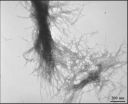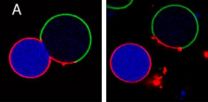(Press-News.org) University of Rochester Medical Center researchers have pinpointed two genes that are amplified in the worst cases of esophageal cancer, providing data to support a new investigational treatment that targets those same genes.
The study, led by Tony Godfrey, Ph.D., a research associate professor of Surgery at the James P. Wilmot Cancer Center at URMC, was published by the journal Clinical Cancer Research. It explores the chromosomal abnormalities that influence poor survival rates of esophageal adenocarcinoma (EAC), the more common type of esophageal cancer which occurs at the junction of the stomach and esophagus.
Considered uncommon 20 years ago, the incidence of EAC has grown faster than any tumor type in the United States, Godfrey said. Health authorities believe high rates of obesity and gastroesophageal reflux disease (GERD) contribute to the rising numbers. And despite more awareness, early detection, and newer combinations of cancer therapies, overall survival of esophageal adenocarcinoma ranges from 70 percent to 80 percent for early-stage patients to only 5 percent to 20 percent for stage 3 or 4 patients. Since most cases are discovered when the cancer has already spread, EAC is often a devastating disease.
Until lately, the identification of gene targets for EAC had been limited by too few tissue samples and the inability of technology to provide a finely detailed map of gene mutations.
However, Godfrey's lab was able to collect tumors samples from 116 EAC patients, and then use modern molecular analysis tools – microarray technology -- to investigate the DNA in the tissue. The goal was to study known chromosomal regions associated with EAC and look for subsets of genes involved in malignancy that might also be markers of poor survival.
A better understanding of genetic markers is important because many modern cancer drugs, known as "targeted therapies," are designed to chemically inhibit or block the effect of oncogenes.
Prior studies on EAC had shown an extra copy of a DNA sequence in the 7q21 chromosome region. However, Godfrey and colleagues believe they are the first to map the region with fine enough resolution to identify six genes within the core of the amplified region, and to compare them to patient outcomes.
They further honed in on two genes, CDK6 and CDK4, and through laboratory experiments proved that both genes are critical for the growth of esophageal cancer cells.
Amin Ismail, Ph.D., the postdoctoral scientist in Godfrey's lab who led the research, explained that the two molecules appear to do exactly the same thing, however CDK4 is located elsewhere, in the 12q13 chromosome region, and although it is less frequently amplified compared to CDK6, its high expression in EAC may be attributed to other genetic alterations.
Researchers explored the activity of CDK4 and CDK6 both independently and in combination. They paid special attention to CDK6, which also has been associated with poor survival in T-cell lymphoma and two common brain cancers, gliomas and medulloblastomas. CDK6 is a known regulator of the cell cycle, and thus researchers theorized that if they could shut down the CDK6 activity, the proliferation of cancer should also cease.
These experiments, Ismail said, led to the discovery that CDK6 is not acting completely alone, and that the combined over-expression of CDK6/4 was a more accurate marker of poor survival than the amplification of either gene alone.
Meanwhile, researchers knew that an experimental drug (known as PD-0332991) targeting CDK6/4 had been developed by Pfizer and Onyx, and was already being used in early clinical trials, showing promise against a range of cancers.
Therefore, the Wilmot research team tested PD-0332991 in the laboratory on esophageal cancer cells and discovered that, indeed, the drug halted CDK6/4 by inhibiting the entire cell-cycle process involved in malignancy.
"Our data provide direct evidence that CDK6 and CDK4 are strong predictors of poor survival, and that targeting those molecules is a viable treatment option," Godfrey said. "Although we still have more work to do, we are excited about the excellent progress in the effort to find better treatments for esophageal cancer."
The approach used by Godfrey and his team follows a classic example of another success story in cancer research. Decades ago scientists discovered that the protein HER-2 (human epidermal growth factor receptor 2) is frequently amplified in some breast cancers, causing them to become more aggressive. They reasoned that a drug was needed to effectively interfere with the HER-2 gene. That drug, known as Herceptin, was developed and then approved by the U.S. Food and Drug Administration in 1998 and is widely used today to boost the life expectancy of thousands of women. Interestingly, some patients with EAC also take Herceptin, due to recent studies showing that HER-2 also is over-expressed in a subset of esophageal tumors.
###
The National Institutes of Health funded the URMC study.
Researchers home in on genetic signature of esophageal cancer
2011-05-19
ELSE PRESS RELEASES FROM THIS DATE:
China fossil shows bird, crocodile family trees split earlier than thought
2011-05-19
A fossil unearthed in China in the 1970s of a creature that died about 247 million years ago, originally thought to be a distant relative of both birds and crocodiles, turns out to have come from the crocodile family tree after it had already split from the bird family tree, according to research led by a University of Washington paleontologist.
The only known specimen of Xilousuchus sapingensis has been reexamined and is now classified as an archosaur. Archosaurs, characterized by skulls with long, narrow snouts and teeth set in sockets, include dinosaurs as well as ...
University of Alaska Fairbanks researchers eye Sikuliaq science possibilities
2011-05-19
Sam VanLaningham can't wait to take the Sikuliaq for a spin.
When it's ready for science operations in 2014, the 261-foot research vessel will be capable of drilling Bering Strait seafloor cores in any season. VanLaningham hopes those cores will uncover mysteries about the history of climate change in Alaska.
Last week, VanLaningham and several UAF scientists met with other researchers and agency representatives at the first Sikuliaq Science Workshop at Marinette Marine Corporation in Marinette, Wis. At the workshop, scientists presented and discussed some of the many ...
Neutrons provide first sub-nanoscale snapshots of Huntington's disease protein
2011-05-19
OAK RIDGE, Tenn., May 18, 2011 – Researchers at the Department of Energy's Oak Ridge National Laboratory and the University of Tennessee have for the first time successfully characterized the earliest structural formation of the disease type of the protein that causes Huntington's disease. The incurable, hereditary neurological disorder is always fatal and affects one in 10,000 Americans.
Huntington's disease is caused by a renegade protein "huntingtin" that destroys neurons in areas of the brain concerned with the emotions, intellect and movement. All humans have the ...
Virtual workout partners spur better results
2011-05-19
EAST LANSING, Mich. — Can't find anyone to exercise with? Don't despair: New research from Michigan State University reveals working out with a virtual partner improves motivation during exercise.
The study led by Deborah Feltz, chairperson of MSU's Department of Kinesiology, is the first to investigate the Kohler effect on motivation in health video games; that phenomenon explains why inferior team members perform better in a group than they would by themselves.
The research, to be published in an upcoming edition of the Journal of Sport and Exercise Psychology, was ...
New technique sheds light on the mysterious process of cell division
2011-05-19
Using a new technique in which models of primitive cells are constructed from the bottom up, scientists have demonstrated that the structure of a cell's membrane and cytoplasm may be as important to cell division as the specialized machinery -- such as enzymes, DNA or RNA -- which are found within living cells. Christine Keating, an associate professor of chemistry at Penn State University, and Meghan Andes-Koback, a graduate student in the Penn State Department of Chemistry, generated simple, non-living model "cells" with which they established that asymmetric division ...
The Luminosity Rapid eLearning Authoring Platform From CM Group Now Available to Smaller Producers; New Cloud-Based Luminosity Server Enables Low-Cost eLearning Creation for All
2011-05-19
The new annual rental model is just $1,395 per author pa with full access to a secure cloud based server to facilitate full author collaboration and stakeholders' review.
Luminosity's architecture means that there is a small piece of software that is installed on the author's PC. The author can work offline and not rely on a constant internet connection. When authors next go onto the internet they can sync up with the server at that time. This is ideal for authors who do not have constant high bandwidth internet access. It also fully supports those authors working individually ...
Researchers discover that lymphocyte count indicates prognosis of patients with renal cell carcinoma
2011-05-19
CHICAGO, IL (May 18, 2011)––Each year, kidney cancer is diagnosed in nearly 60,000 people in the U.S. Many of these patients undergo surgery to remove the affected kidney, but this procedure can be risky for the elderly and those who have other health problems. Unfortunately, the prognosis of kidney cancer patients often cannot be determined until tumor samples are surgically removed and evaluated. Now, researchers at Fox Chase Cancer Center have discovered that the lymphocyte count––which is routinely measured in laboratory tests––is a simple and effective prognostic ...
Recurring cancers in women with a history of breast cancer differ from the original tumors
2011-05-19
CHICAGO, IL (May 18, 2011)––When women with a history of breast cancer learn they have breast cancer again, one of the first questions they and their doctors ask is: Has my cancer come back, or is this a new case? Now, new data from Fox Chase Cancer Center suggest that both new and recurring cancers will differ significantly from the original tumors, regardless of how many months or years women spent cancer-free, and doctors should tailor treatment to the specific qualities of the second tumor, regardless of whether it's old or new.
Anita Patt, MD, surgical oncology ...
Develop iPhone and iPad Applications in Minutes, Easily Creating Complex Forms, with Validation, Save and Manage Data, Using IOSKit from Knovial
2011-05-19
In light of the iPhone and the iPad's growing popularity and usage among today's consumers, the demand for various applications that can be downloaded and used via iPhones and iPads has skyrocketed. There is an application for virtually every aspect of daily living: games, fitness management, business organization, social networking, health care systems, and the list go on. Thus, programmers have recognized the potential success in developing applications for the iPhone and the iPad. However, it's a fact that a lot of programmers spend hundreds of hours trying to build ...
Enzyme may drive breast cancer growth
2011-05-19
A recently discovered enzyme drives the production of a potent form of estrogen in human breast cancer tissue, researchers from the University of Illinois at Chicago College of Medicine have found.
The extra-strength estrogen, called estradiol, then drives the production of even more enzyme, in what may be a lethal feed-forward mechanism. Estradiol has been implicated in exacerbating tumor growth in breast cancer.
The research is published in the May issue of the journal Molecular Endocrinology.
Scientists had observed the increased production of an unknown protein ...



